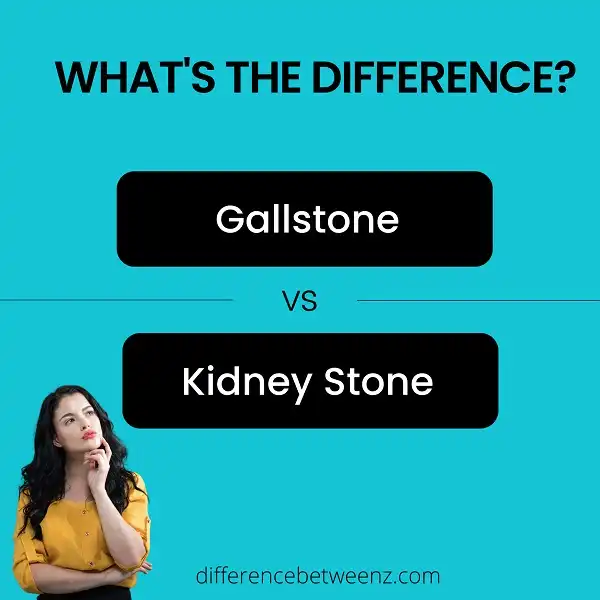Although both gallstones and kidney stones are mineral deposits that can cause pain and other problems, there are some key differences between the two. Gallstones form in the gallbladder, while kidney stones form in the kidneys. Gallstones are usually larger than kidney stones, and they can be harder to break up. Kidney stones often cause more severe pain than gallstones. Finally, gallstones are not as common as kidney stones. If you have any questions or concerns about either condition, be sure to speak with your doctor.
What is Gallstone?
Gallstones are hardened deposits of digestive fluid that can form in your gallbladder. Your gallbladder is a small, pear-shaped organ on the right side of your abdomen, just beneath your liver. The Gallstone is made up of cholesterol, bilirubin, and calcium salts. Gallstones range in size from as small as a grain of sand to as large as a golf ball. Some people develop just one gallstone, while others develop many Gallstones at the same time. Gallstones can be very painful and may require treatment or surgery to remove the Gallstone.
There are two types of Gallstones: Pigment Gallstones and Cholesterol Gallstones. Treatment for Gallstones may include changes in diet, medication, or surgery. Surgery to remove the Gallstone is called cholecystectomy and is usually performed laparoscopically. Gallstones are a common condition, affecting approximately 20% of adults in the United States. Gallstones are more common in women than men and are more common in people over the age of 60 years.
What is Kidney Stone?
- Kidney stones are small, hard deposits that form in the kidneys. They are made up of minerals and acids that have crystallized in the urinary tract. Kidney stones can range in size from a grain of sand to a pea. They can cause severe pain and blockage in the urinary tract. Kidney stones usually pass on their own, but they can also be removed with medical procedures.
- Kidney stones are a common problem, affecting about 10% of people at some point in their lives. Kidney stones are more common in men than women. Kidney stones can run in families. Kidney stones are more common in certain ethnic groups, such as Native Americans and Caucasians. Kidney stones are more common in people over the age of 40. Kidney stones are more likely to occur during pregnancy and menopause. Kidney stones are more likely to occur in people who live in hot climates.
- Kidney stones are more likely to occur in people who don’t drink enough fluids or who lose too much fluid due to sweating, vomiting, or diarrhea. Kidney stones are also more likely to occur in people who eat a diet high in animal protein, salt, sugar, or refined carbs.
Difference between Gallstones and Kidney Stones
Gallstones and kidney stones are both types of calculi, or hardened deposits, that form in the body. Gallstones tend to form in the gallbladder, while kidney stones typically form in the kidneys. However, it is possible for kidney stones to form in other parts of the urinary tract, such as the ureters or bladder. Both gallstones and kidney stones can cause pain and other symptoms, but they are treated differently. Gallstones are usually treated with surgery to remove the gallbladder, while kidney stones can be treated with medication or surgery.
Gallstones are small, hard deposits that form in the gallbladder. They are made up of cholesterol, bile pigments, and calcium salts. Gallstones can range in size from a grain of sand to a golf ball. Gallstones can cause pain in the upper abdomen, nausea, vomiting, bloating, and belching. Gallstones may also cause fever and jaundice. Kidney stones are small, hard deposits that form in the kidneys. They are made up of calcium salts, uric acid, struvite, and cystine. Kidney stones can range in size from a grain of sand to a golf ball.
Conclusion
Although both stones can cause pain and discomfort, there are some key differences between gallstones and kidney stones. Gallstones are usually smaller than kidney stones, and they form in the gallbladder. Kidney stones form in the kidneys and tend to be larger. Gallstones are more likely to cause an infection, while kidney stones may lead to renal failure. If you’re experiencing pain that you believe may be caused by a stone, it’s important to see your doctor for diagnosis and treatment.


